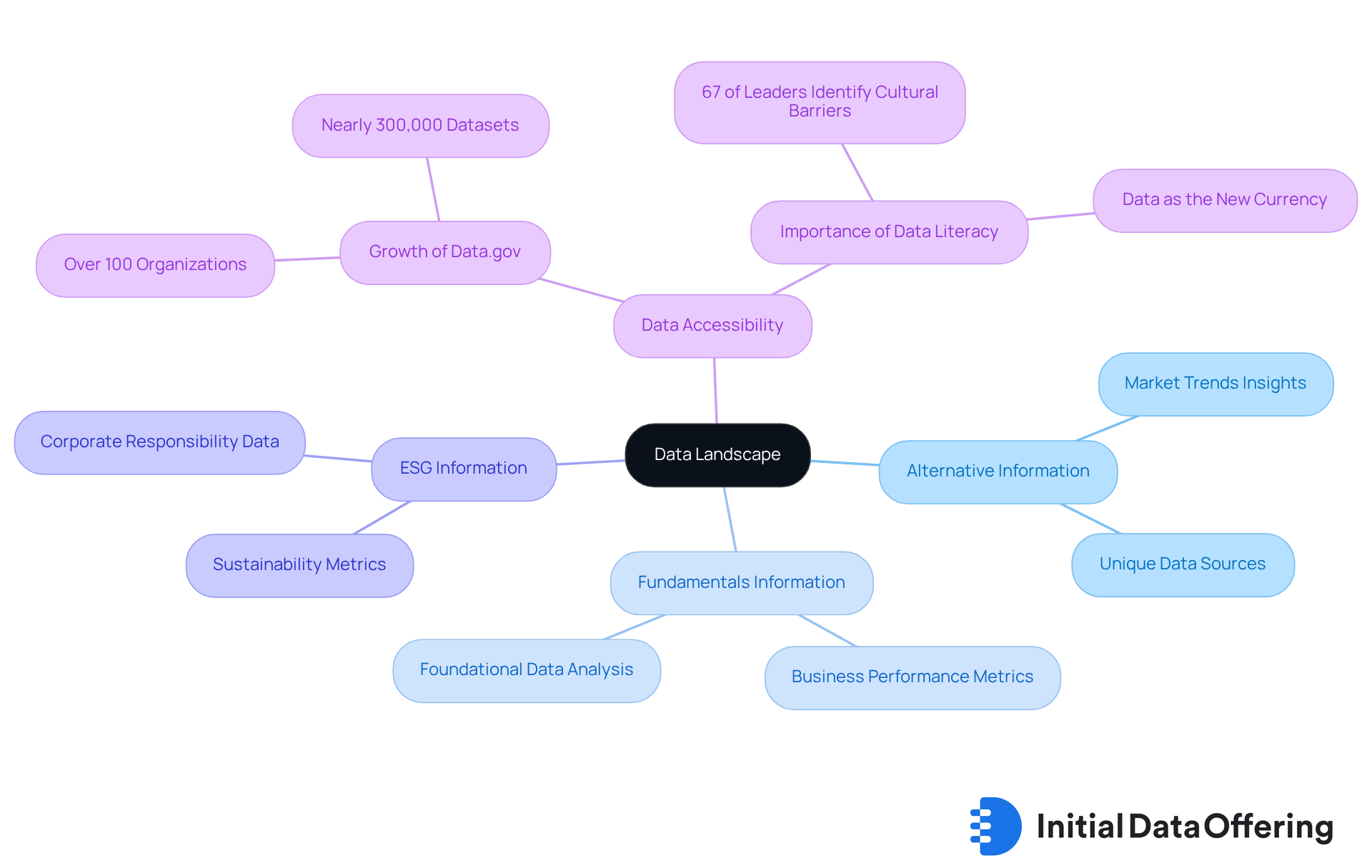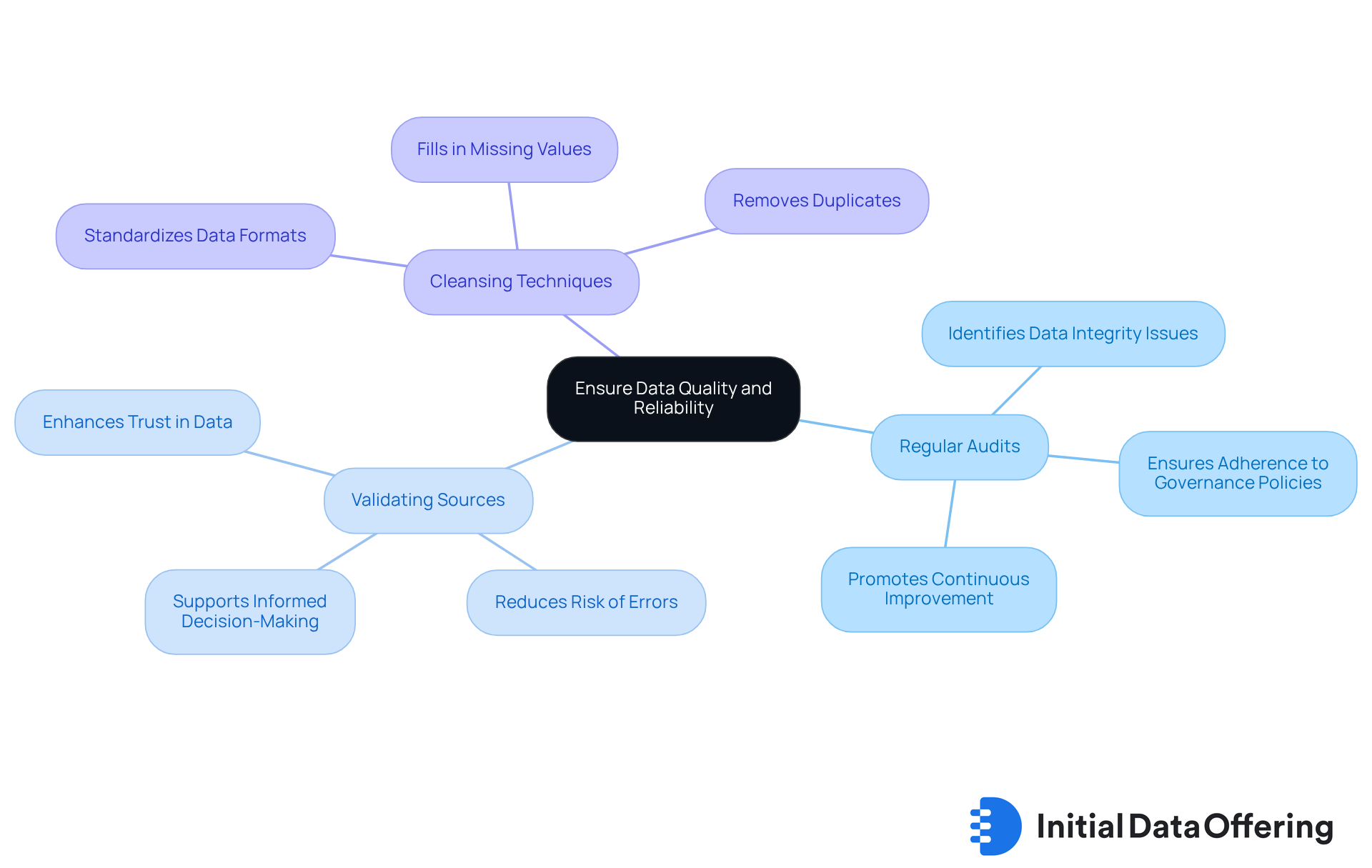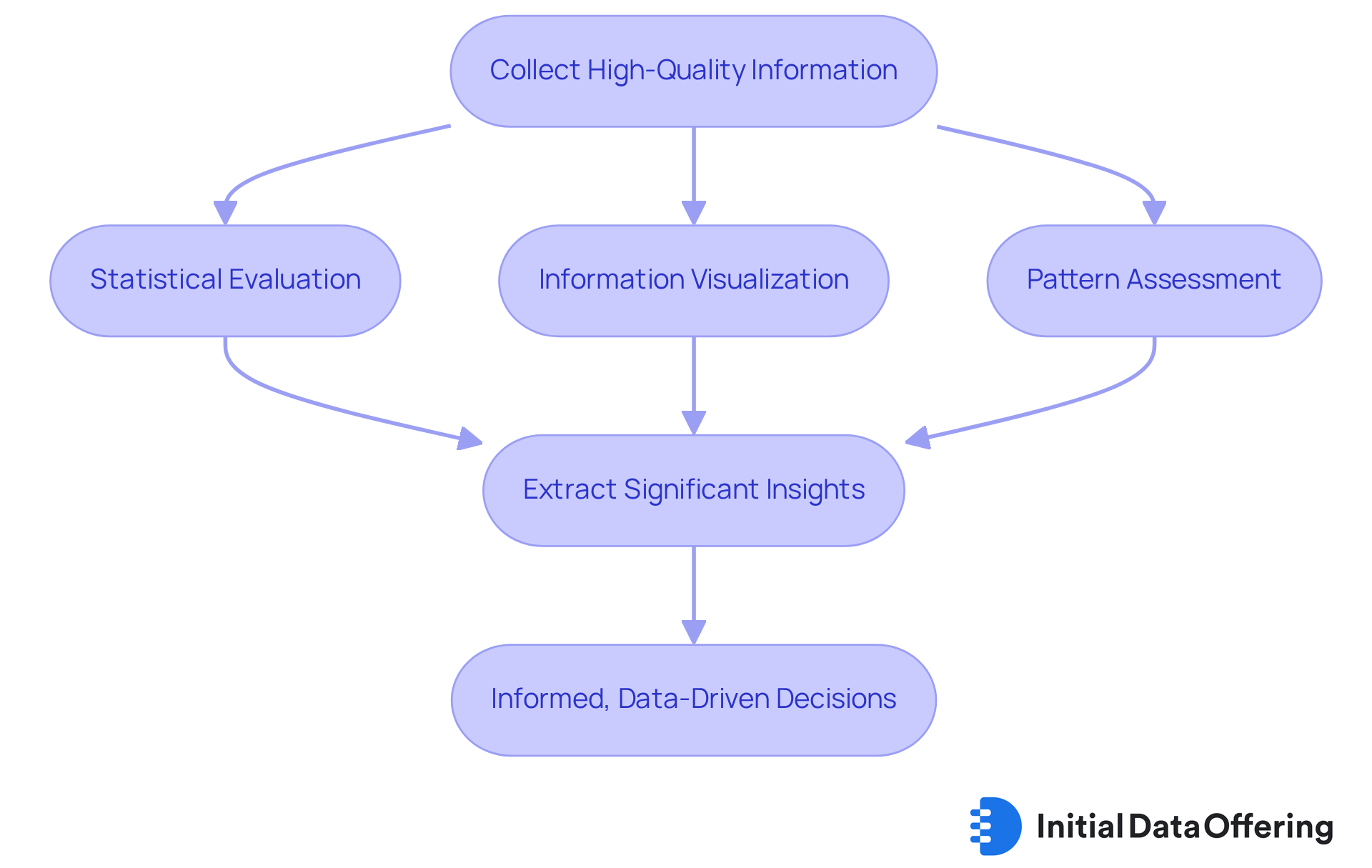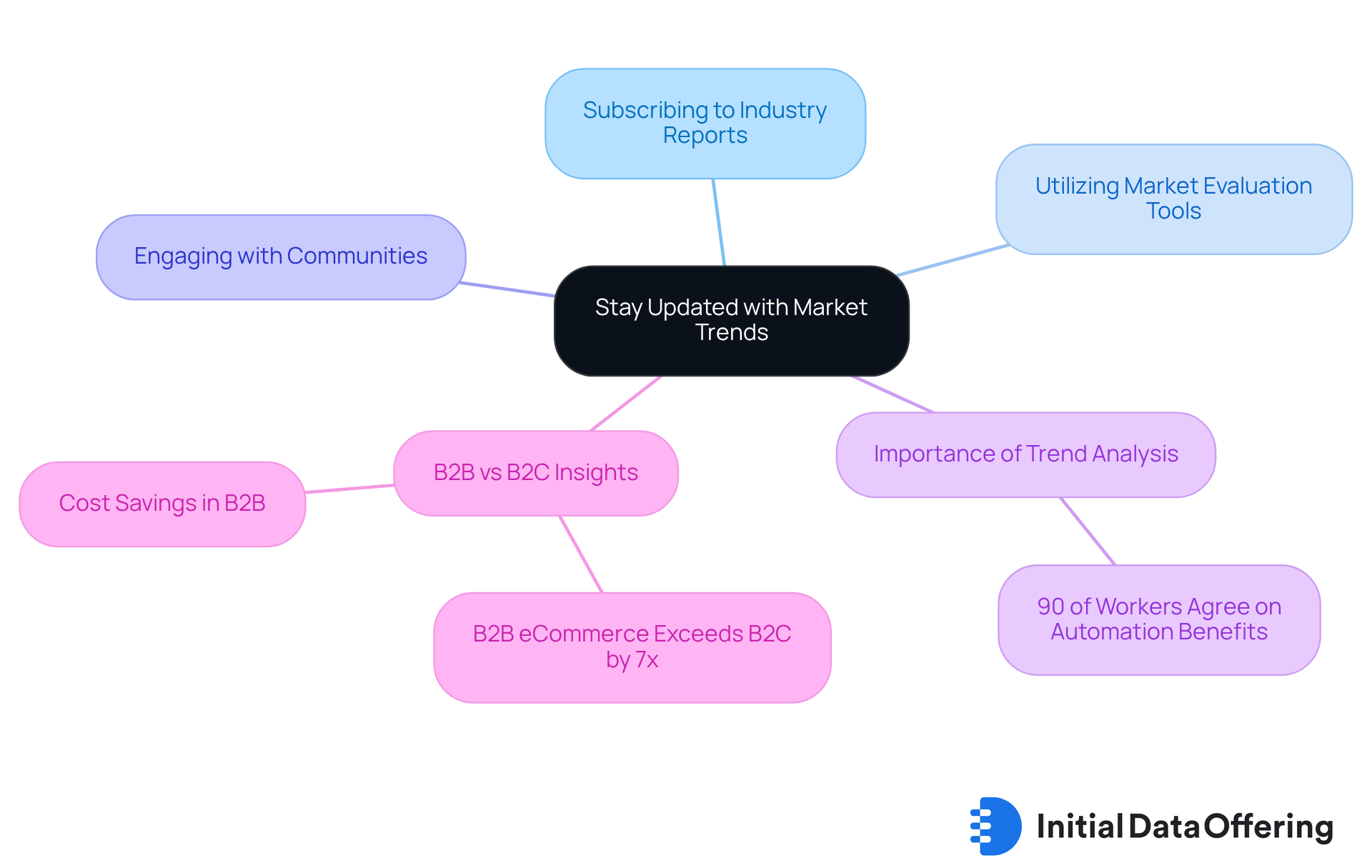4 Key Practices for Navigating the Data Web Effectively

4 Key Practices for Navigating the Data Web Effectively
Overview
Effectively navigating the data web hinges on several key practices. First, understanding the data landscape is crucial; it allows organizations to identify and leverage the right datasets. This understanding leads to enhanced decision-making, as it ensures that the data being utilized is relevant and aligned with organizational goals.
Next, ensuring data quality and reliability cannot be overstated. High-quality data is the foundation for accurate insights, which ultimately drive strategic actions. By maintaining data integrity, organizations can trust their analytical outputs, leading to more informed decisions and a competitive edge in the market.
Developing effective data interpretation strategies is also essential. Organizations must not only collect data but also interpret it in a way that provides actionable insights. This capability empowers teams to respond swiftly to market changes, ensuring they remain relevant and competitive.
Lastly, staying updated with market trends is vital. By continuously monitoring changes in the market, organizations can adapt their strategies accordingly, fostering a proactive approach to data utilization.
How can your organization implement these practices to enhance its data-driven decision-making? By embracing these key practices, organizations can navigate the complexities of the data landscape with confidence and agility.
Introduction
Navigating the intricate web of data presents a significant challenge, particularly as the volume and variety of information expand at an unprecedented rate. Understanding the landscape of available datasets is essential for organizations seeking to effectively harness data for strategic decision-making. Given the rapid evolution of data sources and the increasing focus on data quality, how can businesses ensure they are not only keeping pace but also leveraging these insights to secure a competitive edge? This article delves into four key practices that empower organizations to navigate the data web effectively, enhancing their capacity to interpret, validate, and apply data for optimal outcomes.
Understand the Data Landscape
To effectively navigate the data web, it is essential to first understand the landscape of available information. This involves identifying various kinds of datasets available in the data web, such as:
- Alternative information, which can provide unique insights into market trends.
- Fundamentals information that offers a foundational perspective on business performance.
- ESG information, which is becoming increasingly crucial for entities focusing on sustainability metrics.
A survey indicates that 67% of analytics leaders recognize organizational culture as an obstacle to becoming information-oriented, emphasizing the necessity for analytical literacy in comprehending these categories.
Familiarizing yourself with these data web datasets will enable you to identify which align with your specific needs and objectives. Prominent entities, including financial establishments and technology firms, are already employing alternative information sourced from the data web to enhance their market analysis and forecasting abilities. For instance, platforms like IDO serve as valuable resources for exploring and discovering datasets related to the data web pertinent to your industry, ensuring you have a comprehensive view of the information landscape.
Moreover, Data.gov has experienced substantial expansion in its data web, now showcasing almost 300,000 datasets and collections from more than 100 organizations. This growth illustrates the rising availability of the data web. How can you leverage these datasets to inform your strategies? Understanding the features and benefits of these resources can significantly enhance your decision-making process.

Ensure Data Quality and Reliability
To navigate the information network effectively, it is paramount to ensure the information utilized is of high quality and reliability. This involves implementing best practices, such as:
- Conducting regular audits
- Validating sources
- Employing cleansing techniques
Automated tools like Matillion can be essential in spotting inconsistencies and mistakes, greatly improving reliability. The advantage of these practices lies in their ability to create a strong governance framework, which is crucial for preserving information integrity over time. By emphasizing information quality, entities can rely on the insights produced from their evaluations, which is essential for informed decision-making and strategic planning.
In fact, by 2025, 70% of enterprises are expected to utilize synthetic information for AI and analytics. This statistic underscores the growing recognition of information quality's impact on business success. Regular audits and validation methods not only aid in recognizing information issues early but also promote a culture of responsibility and ongoing enhancement within organizations.
How can your organization implement these practices to improve information quality? Consider the long-term benefits of fostering a reliable information environment that supports strategic objectives.

Develop Effective Data Interpretation Strategies
Once high-quality information has been collected, the next step involves creating effective interpretation strategies. This process entails employing various analytical methods, including:
- Statistical evaluation
- Information visualization
- Pattern assessment
to extract significant insights from the data. For instance, institutions like Massachusetts General Hospital have effectively utilized predictive analytics to enhance patient care. This illustrates how visualization tools can uncover patterns and trends that may not be readily apparent in unprocessed information. Furthermore, it is essential to combine qualitative techniques with quantitative analysis, as qualitative data analysis provides a more comprehensive understanding of context and enriches interpretation.
However, challenges such as inadequate information quality and governance can hinder the execution of advanced analytics. Therefore, it is crucial for organizations to proactively address these issues. By mastering these interpretation strategies, organizations can make informed, data-driven decisions by utilizing the data web to align with their strategic objectives. Ultimately, this enhances operational effectiveness and drives better outcomes. How might these strategies apply to your organization’s data practices?

Stay Updated with Market Trends
To effectively navigate the information network, it is crucial to stay informed about the latest market developments. This can be achieved through various methods, such as:
- Subscribing to industry reports
- Utilizing market evaluation tools
- Engaging with communities in the data web
Platforms like IDO provide valuable insights into emerging datasets and developments that are shaping the market landscape. For instance, over 90% of companies believe that leveraging trend analysis tools enhances their ability to make informed decisions swiftly and accurately, particularly in the realm of business automation. Regularly reviewing market analytics and consumer behavior studies enables organizations to anticipate changes and adapt their strategies accordingly.
Furthermore, recognizing that B2B eCommerce surpasses B2C by nearly seven times offers additional context regarding market dynamics. How can businesses capitalize on this knowledge? By staying informed about these dynamics, organizations can harness the data web to drive innovation and strengthen their competitive positioning. This proactive approach not only enhances decision-making but also positions companies to respond effectively to evolving market conditions.

Conclusion
Effectively navigating the data web necessitates a comprehensive understanding of the diverse datasets available and the practices that ensure their quality and reliability. By grasping the intricacies of the data landscape, organizations can align their data strategies with specific objectives, enhancing decision-making processes. This foundational knowledge is essential for leveraging the wealth of information at their disposal.
Key practices, such as:
- Ensuring data quality through regular audits
- Developing robust data interpretation strategies
- Staying updated with market trends
are crucial for success. These strategies not only facilitate informed decision-making but also empower organizations to respond proactively to changing market dynamics. As the data landscape continues to evolve, adopting these practices will become increasingly vital for maintaining a competitive edge.
Ultimately, the significance of mastering these key practices cannot be overstated. Embracing a proactive approach to navigating the data web enables organizations to harness insights that drive innovation and strategic growth. By prioritizing data literacy and quality, businesses can position themselves to thrive in an increasingly data-driven world, ensuring they are well-equipped to meet future challenges and opportunities.
Frequently Asked Questions
What is the importance of understanding the data landscape?
Understanding the data landscape is essential for effectively navigating the data web, as it helps identify various types of datasets available, such as alternative information, fundamentals information, and ESG information.
What types of datasets are mentioned in the article?
The article mentions three types of datasets: alternative information (providing unique insights into market trends), fundamentals information (offering a foundational perspective on business performance), and ESG information (focused on sustainability metrics).
What percentage of analytics leaders see organizational culture as an obstacle to becoming information-oriented?
A survey indicates that 67% of analytics leaders recognize organizational culture as an obstacle to becoming information-oriented.
How can familiarizing oneself with data web datasets be beneficial?
Familiarizing oneself with data web datasets enables individuals to identify which datasets align with their specific needs and objectives, enhancing their market analysis and forecasting abilities.
What resources are mentioned for exploring datasets related to the data web?
Platforms like IDO are mentioned as valuable resources for exploring and discovering datasets related to the data web pertinent to specific industries.
How many datasets does Data.gov currently showcase?
Data.gov showcases almost 300,000 datasets and collections from more than 100 organizations.
What can be achieved by leveraging datasets from the data web?
Leveraging datasets from the data web can significantly enhance decision-making processes and inform strategies by providing valuable insights and comprehensive information.